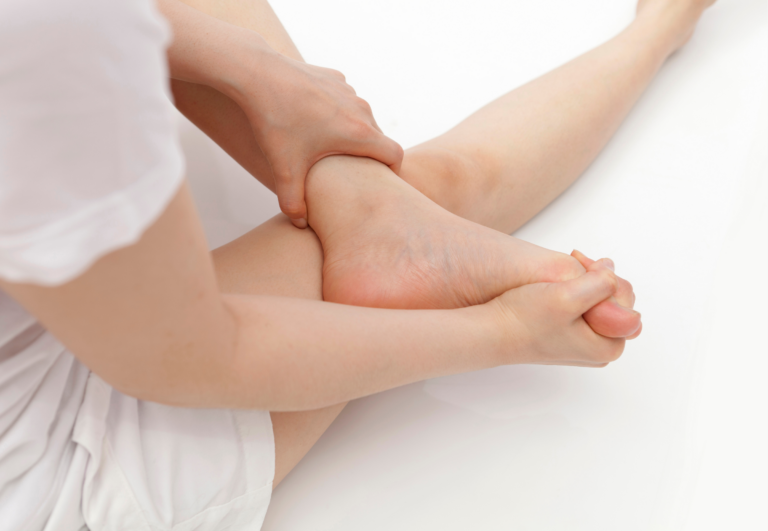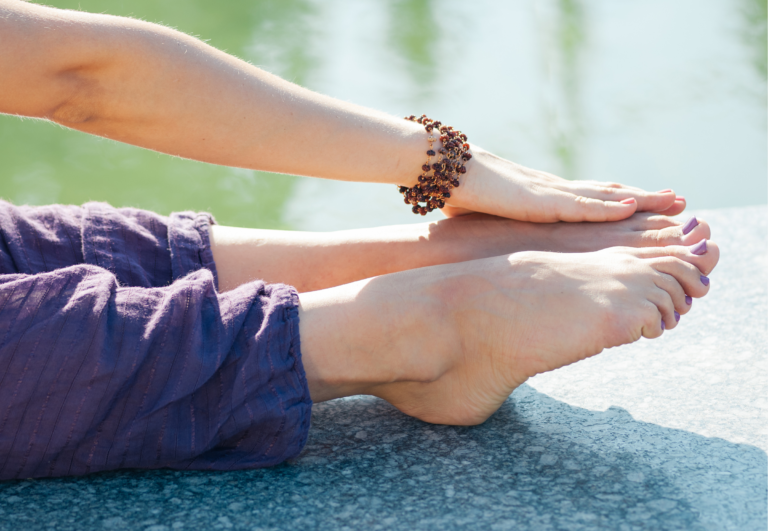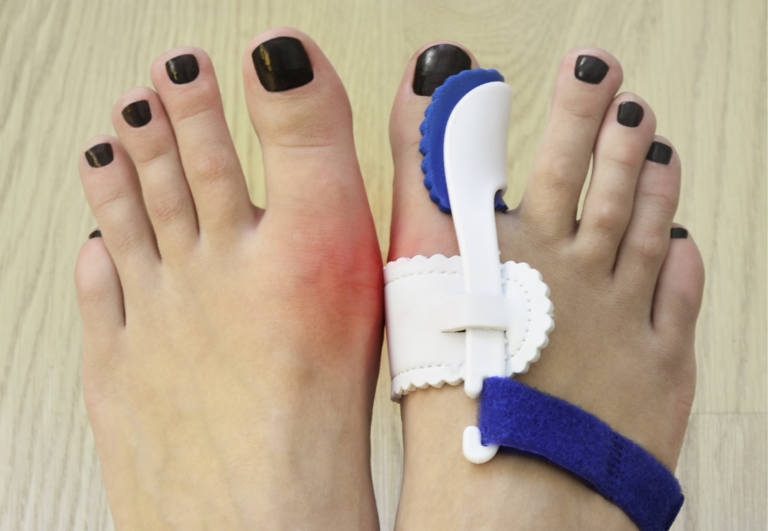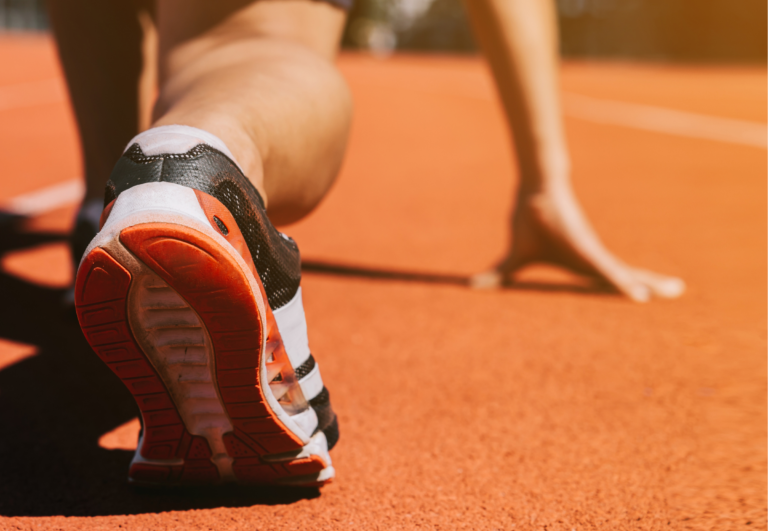Yoga Exercises with Toe Spacers: Enhancing Alignment and Flexibility
Integrating toe spacers into yoga can transform the experience of your practice, providing a new level of comfort and support for your feet. By positioning these clever devices between your toes, they encourage a more natural alignment, which in turn promotes an evenly distributed weight across the feet. In my yoga journey, these simple tools have been instrumental in not only improving the stability and flexibility of my footwork but also in enhancing overall foot health.
With regular use, toe spacers can help to mitigate the common issues of crowded or overlapping toes, potentially preventing long-term deformities. In my sessions, I’ve noticed how toe spacers gently coax each toe into proper position, allowing for a rooted sensation in standing poses. These benefits extend beyond the mat, too, contributing to a comfortable and healthful state for my feet throughout the day.
Including toe spacers in your yoga exercises is beneficial not just for immediate alignment corrections but also as a proactive approach to foot care. The sense of space and openness they provide has improved not just my physical practice, but also my mindfulness of how integral foot health is to overall well-being.
Yoga Exercises with Toe Spacers – a Step-by-Step Routine
Using toe spacers during yoga can enhance the benefits of your practice by helping to realign your toes, improve balance, and strengthen the muscles of your feet. Here’s a step-by-step routine for yoga exercises with toe spacers:
- Mountain Pose (Tadasana):
- Stand with your feet hip-width apart, and toe spacers in place.
- Ground through all four corners of your feet.
- Engage your leg muscles and lengthen your spine.
- Hold the pose for 30 seconds to 1 minute, focusing on the sensation of your toes spreading.
- Downward-Facing Dog (Adho Mukha Svanasana):
- Start on your hands and knees, with toe spacers in.
- Lift your hips up and back, forming an inverted V-shape.
- Press firmly through your hands while allowing your head to relax.
- Hold for 1 to 3 minutes, feeling the stretch in your feet and toes.
- Warrior II (Virabhadrasana II):
- From standing, step one foot back and bend your front knee to a 90-degree angle.
- Extend your arms parallel to the floor, shoulders relaxed.
- Gaze over your front hand and hold for 30 seconds to 1 minute.
- Switch sides and repeat, noticing the toe spacer’s effect on your balance.
- Tree Pose (Vrksasana):
- Stand with toe spacers in and shift your weight onto one foot.
- Place the sole of the other foot on your inner calf or thigh (avoid the knee).
- Bring your hands to your heart or extend them overhead.
- Hold for 30 seconds to 1 minute, then switch sides.
- Focus on the grounding sensation of your standing foot’s toes.
- Chair Pose (Utkatasana):
- Stand with toe spacers in and feet hip-width apart.
- Bend your knees as if sitting back into a chair, weight in your heels.
- Extend your arms forward or overhead, keeping your back straight.
- Hold for 30 seconds to 1 minute, feeling the engagement in your feet and toes.
- Forward Fold (Uttanasana):
- From standing, hinge at your hips and fold forward, letting your head hang.
- Keep the toe spacers in as you relax into the pose.
- Hold for 30 seconds to 1 minute, allowing your toes to spread naturally with the spacers.
- Bridge Pose (Setu Bandhasana):
- Lie on your back with your knees bent and feet flat on the floor, hip-width apart.
- Press your feet into the floor and lift your hips up, keeping the toe spacers in.
- Clasp your hands under your back or keep your arms flat.
- Hold for 30 seconds to 1 minute, focusing on the alignment of your toes.
Remember to breathe deeply and consistently throughout your practice. The toe spacers may feel strange at first, so give yourself time to adjust to the sensation. Always consult with a healthcare professional before starting any new exercise routine, especially if you have any foot conditions or concerns.
An Overview of Toe Spacers
Toe spacers are small devices designed to spread your toes, promoting proper alignment and enhancing foot mobility. As an expert in their usage, I’ll guide you through the various types, their benefits, how to choose the right pair, safety considerations, maintenance, and what foot conditions they can assist with.
Different Materials and Types
Toe spacers are commonly made from materials like silicone, gel, and foam. Silicone spacers are durable and offer a firm hold, gel types provide cushioning comfort, and foam spacers are often softer and more pliable. Each type comes in different sizes for a secure fit and various designs to target specific issues.
- Silicone: Rigid, durable, long-lasting
- Gel: Cushioning, comfortable, adaptable fit
- Foam: Soft, flexible, gentle separation
Benefits of Using Toe Spacers
Integrating toe spacers into your yoga practice can enhance balance and alignment, leading to improved posture and stability. They also support mobility in your toes, assisting with pain relief and the prevention of foot issues. Users often report reduced discomfort from bunions, hammertoe, and plantar fasciitis.
Selecting the Right Toe Spacers
Choosing toe spacers is a matter of comfort and needs. For yoga, a medium hold that maintains mobility while ensuring proper alignment is optimal. Always consider the sizing chart of the manufacturer to ensure a secure fit without restricting circulation.
- Check material for comfort and allergic reactions
- Ensure appropriate sizing for your foot shape
Safety and Precautions
While generally safe, it’s best to consult a healthcare provider if you have underlying conditions like diabetes or rheumatoid arthritis. Use toe spacers incrementally to avoid overcorrection or injury. Start with shorter periods and gradually increase usage time as your feet adjust.
Daily Maintenance and Care
Keeping your toe spacers clean is crucial for hygiene. Opt for easy-to-clean materials like silicone that are less likely to absorb bacteria. Following each use, wash them with soap and water, and let them air dry thoroughly.
Common Conditions Toe Spacers Can Help
Toe spacers are beneficial for treating and preventing various foot conditions. They offer relief for bunions, align toes for hammertoe sufferers, reduce pain from plantar fasciitis, and can help in managing foot problems associated with diabetes or rheumatoid arthritis. Always remember that these are part of a broader self-care routine and should be used proactively.
Incorporating Toe Spacers into Yoga Practice

Toe spacers are valuable tools that can transform your yoga practice. When I first started integrating them into my sessions, I was aiming to improve my foundation and balance. They work by gently separating the toes, enhancing body awareness, and distributing weight more evenly across my feet. Over time, this can lead to increased flexibility and strength, especially in standing poses.
Using Toe Spacers: A Step-By-Step Guide
- Begin with Clean Feet: Make sure your feet are clean and dry before inserting the toe spacers.
- Inserting: Gently insert the toe spacers between each toe, starting from the little toe towards the big toe.
- Starting Slow: Begin with a few minutes of wear during simple poses and gradually increase usage as comfort allows.
Yoga Poses Ideal with Toe Spacers:
- Tadasana (Mountain Pose): For a solid foundation.
- Vrksasana (Tree Pose): To challenge balance.
- Uttanasana (Standing Forward Bend): To feel the stretch in the feet.
Benefits of Toe Spacers in Yoga
- Flexibility: Toes become less cramped, improving flexibility over time.
- Strength: Engages and strengthens foot muscles, aiding poses like arm balances.
- Balanced Foundation: Helps correct alignment for a more stable base in poses.
Remember, I’m sharing from personal experience and not medical expertise. It’s always good to listen to your body and consult with a yoga instructor about the best use of toe spacers for your practice.
Yoga Exercises for Enhanced Foot Health
Incorporating toe spacers into yoga practice can effectively improve foot health by promoting better alignment and strength in the toes and feet. These exercises specifically target flexibility and stability, forming a solid foundation for overall posture and balance.
Stretching and Strengthening Moves
- Toe Spread: Sit comfortably and place the spacers between your toes. Press down gently to feel a stretch across the top and bottom of the foot. Hold for 30 seconds.
- Heel Raises: Stand with spacers in place. Lift heels off the ground, engaging the calf muscles and feel the stretch in the toes. Repeat 10 times.
Yoga Poses Specific to Toe Mobility
- Mountain Pose (Tadasana): Stand with toe spacers and distribute weight evenly. Notice the alignment from your ankles up through your spine to encourage ease of movement.
- Downward-Facing Dog (Adho Mukha Svanasana): Enhance toe stretch and strength in this pose by actively pressing through the fingers and heels.
Balance and Stability Workouts
- Tree Pose (Vrikshasana): Position the foot of your non-standing leg against the inner thigh. Focus on the stability provided by the alignment of the toes with spacers.
- Warrior III (Virabhadrasana III): Challenge your balance with toe spacers, extending one leg behind you as you lean forward, creating a ‘T’ shape.
Cool Down and Relaxation
- Reclining Hand-to-Big-Toe Pose (Supta Padangusthasana): Lying on your back, loop a strap around your foot with spacers. Gently pull closer to deepen the stretch, encouraging relaxation.
- Corpse Pose (Savasana): End your practice lying flat, allowing your feet to fall open with the spacers still in place. Focus on the ease and comfort achieved through the session.
Toe Separator Usage Beyond Yoga

Using toe separators isn’t just about enhancing my yoga practice. They play a vital role in my daily routine, offering comfort and contributing to the alignment of my feet.
Daily Routine:
For me, incorporating toe spacers into my everyday life has been beneficial. Whether I’m standing for long periods, moving around the office, or relaxing at home, they maintain proper toe alignment, which is essential for balanced weight distribution on my feet.
Footwear Adaptation:
Adapting toe spacers with my footwear has been a game-changer. I choose shoes with ample space to accommodate them, ensuring my toes remain splayed naturally throughout the day.
Health and Comfort:
- Pain Relief: The gentle separation reduces the pressure on my toes, providing a sense of relief from foot pain associated with various conditions.
- Foot Conditions: Regular use has helped manage symptoms of bunions and hammertoes by keeping my toes straight and preventing them from overlapping.
Table: Benefits of Toe Spacers in Daily Life
| Benefit | Description | Frequency of Use |
|---|---|---|
| Alignment | Keeps toes in natural position | Daily |
| Comfort | Reduces pressure on toe joints | As needed |
| Pain Relief | Alleviates discomfort from foot conditions | As needed |
| Versatility with Footwear | Compatible with spacious shoes for extended wear | Throughout the day |
While I’m not a medical professional, my experience has shown that the consistent use of toe spacers, beyond my yoga mat, has positively impacted my life, providing steady comfort and support for my feet.
The Long-Term Benefits of Toe Spacers
I’ve found that consistently using toe spacers can lead to substantial improvements in overall foot health. The gentle separation of toes encourages better alignment, which can alleviate pain and enhance flexibility.
- Overall Foot Health: Well-aligned toes can prevent the crowding that exacerbates many foot ailments.
- Flexibility: Space between the toes increases, making them more limber and less prone to injuries.
Toe spacers improve circulation in the feet by preventing the toes from clumping together. This increased blood flow can aid in the healing process of the plantar fascia, the connective tissue on the bottom of the foot, and may help reduce the symptoms of plantar fasciitis.
- Circulation: Increased space allows for better blood flow.
The design of toe spacers also supports the natural arch of the foot. Over time, this can strengthen the muscles in the feet, potentially providing better arch support and reducing the occurrence of flat feet.
- Arch Support: Stronger foot muscles support the arch.
When incorporating toe spacers into a yoga routine, they promote a more stable foundation. A stable foundation is essential in yoga as it allows for more accurate poses and can reduce strain on the feet and ankles.
Regular, long-term use of toe spacers can be a simple non-invasive method to maintain and improve foot health. In my experience, toe spacers aren’t just a tool for immediate relief but a step towards healthier feet in the years to come.
Expert Insights and Recommendations
In my experience with toe spacers in yoga, the correct use can lead to improved foot health and can help with proper alignment. These devices provide benefits for both immediate comfort and long-term mobility.
Advice from Podiatrists
Most podiatrists agree that foot health is crucial for overall well-being. Correct toes — the term often used to describe properly aligned toes — promote better posture and distribution of body weight. I’ve seen podiatrists recommend toe spacers for patients as a non-invasive solution to address issues like hammertoes or bunions. They often emphasize the advantages of toe spacers for enhancing the natural shape of the foot.
Testimonials and User Experiences
In my discussions with users of toe spacers, I’ve gathered that comfort and ease of use are top priorities. Users report a variety of benefits including:
- Reduced foot pain: Many find relief from daily foot strain.
- Increased stability in yoga poses: Proper toe alignment appears to aid in balance.
From beginners to advanced yoga practitioners, the feedback on toe spacers is generally positive, citing better movement and alignment during practice.
Future Trends in Foot Health Devices
The design and innovation in toe spacers have come a long way, with technological advancements making them more comfortable and effective. I’ve noticed a trend in the market for foot health devices towards more ergonomic and user-friendly designs. Upcoming models seem to integrate better with different foot sizes and allow for increased movement fluidity — a clear sign of ongoing innovation in this field.





